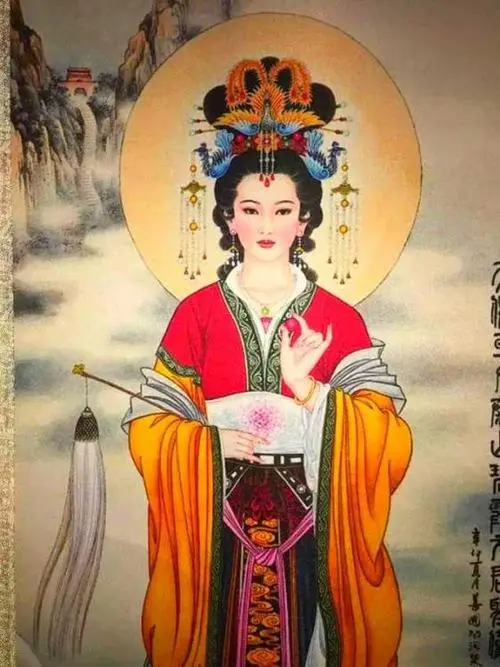The above picture shows a “stele rubbing” – (Photograph provided by the Interview Unit)
Translator’s Note: The Ming Dynasty Temple discussed in this article dates to 1595 CE and is named after the Daoist Goddess known as “碧霞元君” (Bi Xia Yuan Jun) or “Azure Blue – Misty Clouds – Primal Source – Lord”.
Bi (碧) = Azure Blue (related to the colour of jade)
Xia (霞) = Misty Clouds (denoting “dragon’s breath” – as seen at dawn and dusk)
Yuan (元) = Primal Source (the empty origin from which all things manifest and appear within)
Jun (君) = Lord (ancient generic title for a noble and militaristic leader)
The inscription discussed contains the name of the above Temple – plus the additional characters of – Miao (庙) = Temple and Ji (记) = Records – the full name of the inscription is “碧霞元君庙记”. This female Daoist Deity is associated with Mount Tai (泰山 – Tai Shan) situated in Shandong province – and is regarded as a protector of childbirth, and the instigator of each new dawn (which brings hope and renewal), as well as the good destiny of others. This Goddess governs human longevity and is said to judge the deceased. Interestingly, this Goddess listens to the prayers of children in distress – especially male children (sometimes ensuring male offspring) – but she never abandons the well-being of girls and women. The stele mentions the names and ranks of the local Scholar-Officials who arranged for this Temple to be built – usually Third and Fourth Grade (Military and Civil) Officials. ACW (27.3.2024)
2022-11-28 Xinhua Editor:Li Yan
Cultural relics workers in North China’s Hebei Province have discovered a 427-year-old (c. 1595 CE) stone inscription detailing the construction of a temple.
The Ming Dynasty (1368-1644) inscription was found on a bluestone tablet, 3.2 meters long, 1 metre wide, and 30 centimetres thick, in Daying Village of Daliuzhuang Township in Linxi County – according to the Cultural Heritage Protection Department of the county.
The front side of the tablet depicts the name of a Daoist Temple – whilst the back contains 596 Chinese characters – introducing the construction process and related ceremonial activities.
Zhang Xia (长张霞), head of the county’s Cultural Heritage Preservation Institute, said the discovery is a rare “Temple Record” inscription, complete in shape and legible in a textual context. It is a significant find which aids the understanding of the culture and customs of that time.

Chinese Language Text:
https://hebei.hebnews.cn/2022-11/27/content_8908803.htm
距今400多年!河北临西发现明万历年间寺庙碑刻
2022-11-27 19:41:36 来源:新华视点
记者日前从河北省临西县文保部门获悉,临西县文保人员在大刘庄镇大营村发现了一方明代万历二十三年的碑刻,是较为罕见的“寺庙传记”碑刻,距今已有427年。
图为该碑刻拓片。(受访单位供图)
这方碑刻为当地修建碧霞元君庙所立,青石材质,长3.2米、宽1米、厚30厘米。碑刻正面用篆体书写有“碧霞元君庙记”字样,背面碑文用楷体书写,共有596个字,详细记录了碧霞元君庙的修建过程以及当时民间祭祀活动的规模盛大。
碑刻碑文显示,当地碧霞元君庙的倡修者、碑刻撰文者和碑额篆刻者均为地方士绅,碑刻落款处刻有从三品、正四品等级别的官员名,如临清卫指挥使司军政掌印指挥同知王承恩、军政佐贰指挥佥事刘尔安等。
临西县文保所所长张霞介绍,这方明代万历年间的碑刻外形完整,文字脉络清晰,系较为罕见的“寺庙传记”碑刻,不仅对了解明代时期的社会文化、风俗人情具有史料价值,还对进一步完善补充地方志史学具有一定的参考价值。
方志史学具有一定的参考价值。
责任编辑:吴文婷 (Wu Wenting)



